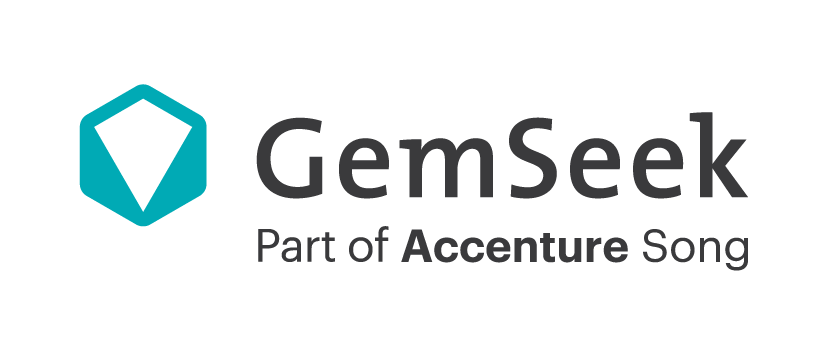How can companies create more value for their customers and thus be more successful in achieving their business goals in 2023? We gathered leading industry experts at a roundtable discussion (organized in partnership with The Customer Centricity World Series Awards,) – Stuart McGown, Head of MI&Analytics at Philips, Ivaylo Yorgov, a prominent CX analytics expert from GemSeek and Stephan Ariesen, VP Medallia. We summarized the main highlights of their conversation below:
Creating value for customers
Amidst a competitive landscape where similar offerings abound, the decisive factor separating successful enterprises from their underperforming peers is the quality of customer experience, notably in the B2B sector. Continuously providing exceptional service is typically the result of a robust feedback mechanism in place.
Post-sale interactions between a brand and its customers are essential. By sustaining an ongoing dialogue, businesses can educate clients on maximizing the value derived from their products, ensuring long-term satisfaction and loyalty.
Rallying the organization behind customer value
Brands’ top priority should be to develop and adopt processes designed to assist their customers. This will enable them not only to build an overall customer experience program around it, but to utterly understand, educate and support their customers in value creation.
Yet, many organizations are still struggling to convince their C-suite to invest in CX and get everyone engaged with customer improvements.
80% of CEOs thought their customers were pleased with what they were offering, so they believed they were great, quoted a survey Stuart McGown, Philips. When the survey was addressed to the people who bought that stuff, only 20% agreed. This large separation between the two positions of customer satisfaction represents a significant discrepancy in customer experience. 20% of people reported being satisfied with what they were getting and experiencing great service, while 80% of company’s CEOs thought they were delivering it.
A highly effective approach to measuring the significance of customer experience is by determining the cost associated with losing customers and establishing a connection to its impact.
The importance of consistency in managing customer expectations and customer feedback
In the discussion, Stuart McGown made an interesting analogy, comparing customer experience to tennis:
I never win because I’m good at tennis. I always win a match because my opponent has dropped the ball or made a mistake. And I think customer experience is a little bit like that. How can you make sure that you’re always delivering? That’s why it’s so important to measure and have a feedback system.
Companies need to be obsessed with what the customer is saying and doing. As customers, we learn what a good customer experience is. This results in companies having a lot of different competitors, because customers often have great expectations from brands, based on their previous experience. For example, B2B companies should not look for great experience benchmarks among their direct competitors only, because the main stakeholders of their customers are end users of the greatest customer-centric companies in the world – Amazon, Spotify and the likes of them. This means they compare their professional experience to the best experience as end users. Soon, companies will try to differentiate themselves increasingly on an experience level, continuously exceeding customers’ expectations.
Being consistent in gathering, measuring, and distributing feedback is valuable in terms of both customer satisfaction and business impact. One of the most crucial parts in collecting customers feedback and insights by diverse types of tools is focusing on customers who are emotionally related to your brand. They are always, giving you high NPS 9 or 10 NPS scores and are being vested in a relationship with your product or service. Their feedback is essential, relevant and can influence managerial decisions not only of analytics, consulting, and marketing, but of product development of sales as well.
How to manage customer expectations:
- Have a feedback loop to mirror what is really happening with your customers
- Remain available to your customers in the post-sale phase
- Be consistent in data collection and use it as a base to act proactively towards your customers’ needs
Companies often analyze all their customers’ data but do not act. Acting to the individual customers changes the whole experience – if you can reach out to your individual customer at the moment of their purchase, it is 50% likely that you can turn a negative response into a positive one.
Gaining a competitive edge stems from exceptional customer experience, and it is essential to have a robust feedback mechanism to guarantee consistent, daily delivery of outstanding service.
Personalization of customer experience
Understanding what your customer says and does means taking feedback into action and creating a multi-level joint journey. Translating your data numbers in a real story, related to a customer, turns them into an almost tangible impact. For example, if you imagine a real person, with a real problem, or even spend an afternoon at a call center listening calls from customers, it is much more probable to understand what the core of their problem is, than just to look at plain numbers.
In the future years of customer analytics, storytelling will be critical in terms of how you approach and personalize your surveys results. Choosing smartly which customer signals are crucial to your business and which customer moments are impactful within a customer journey is associated to micro-feedback, that is an essential part of every CX program.
The power of micro feedback is important. Every voice counts.
Prediction of customer needs and proactive measures
Nowadays many companies have moved into predictive analytics space. What the future in CX is bringing is about companies being proactive. Many brands are already predicting the impact of their actions on their customers and having a recommendation system of brands actions.
Having customers’ complaint list and having identified their profile, you can get a suggestion about the best actions that you can take.That results in the biggest impact on your customers’ decisions, proactively addressing their needs. Migrating from competitive research to strategic market research enables you to understand your brand positioning and your competitors, and to step into a 1:1 actionable proactive approach and predictive analytics.
For example, a sports retail company closed their shop for renovations. Once they reopened it, their sales went down. After a text analytics survey it turned out that the new curtains in the changing rooms were shorter than before and customers were embarrassed to try on clothes, which resulted in a drop of sales. That problem would have never been solved if the company had not dug into the text feedback.
When it comes to internal brand processes and CX, internal transparency is crucial. It demonstrates that at different points of the journey, there are different teams and goals. Customers’ profile needs to be clear and all employees, regardless of their department, shall be able to participate in every step of a customer experience program.
Re-watch the entire webinar session
Enjoy a conversation with Stuart McGown, Head of MI&Analytics at Philips, Ivaylo Yorgov, a prominent CX analytics expert from GemSeek and Stephan Ariesen, VP Medallia.
AVAILABLE ON DEMAND



